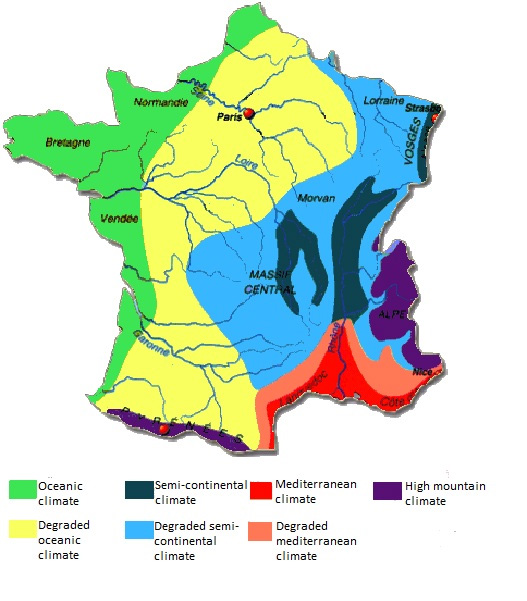Germany has a climate now a days which is mainly varied in the sense of changes with it's temperature lows and highs. Germany's temperature varies as you travel across the country west to east. In the west you will notice temperatures around freezing meanwhile when you travel towards the east of Germany you will experience more well below freezing conditions. Germany also goes through a continental type of weather pattern throughout the year. This means that the climate and weather conditions tend to vary year to year, cold and rainy springs could turn into warm and sunny springs the following year. The main factor which plays a role in Germany's average snowfall and average temperatures is actually the altitude of the land rather than by the various climatic regions affects other regions of the world.
 |
| https://www.emaze.com/@AFZIFCWQ/GERMANY The map shows the climate type per region in Germany |
Germany's Northern regions and Southern Bavaria region, apart from the coastal regions, experiences a relatively constant climate. From Leipzig and Dresden to Stuttgart, warmer summers are often accompanied with frequent rainshowers. Winters are typically cold in these areas. Northwestern and coastal Germany have maritime climate conditions which are caused by warm westerly winds from the North Sea. Germany's presence in the alpine regions have given the southern region and some of central Germany a "mountain climate", which means that the temperatures will be lower with the higher altitudes and greater precipitation caused by the air becoming moisture-laden as it lifts over higher terrain.
This chart helps to show the average change in surface temperatures and average precipitation throughout the world starting in 1986 and the final model portraying forecasts of whats to come ending in 2100. By looking at this model you can see that Germany's temperatures have generally rose by a substantial amount meanwhile the average precipitation increase at a less drastic rate.
This image above shows how drastic the glacial coverage was during the Pleistocene Epoch throughout Europe during the Quaternary Period. This map shows that the white color represents the ice sheet extension south in Europe and you can see how almost all of Germany was covered at one point.
The German and European regions went under speculation by many geologists when determining the actuality of ice age events throughout past history. The geologists soon discovered that in this region there were actually multiple ice ages not just one as some data sets portray. These periods of glaciation followed one another separated by warm periods in the climate. The evidence which supported multiple ice ages during the period known as the "Pleistocene" epoch included the ribbons of end-moraines which were left by the glacial sheets, and also the deposits of wind-blown glacial dust, known as "loess".
No comments:
Post a Comment